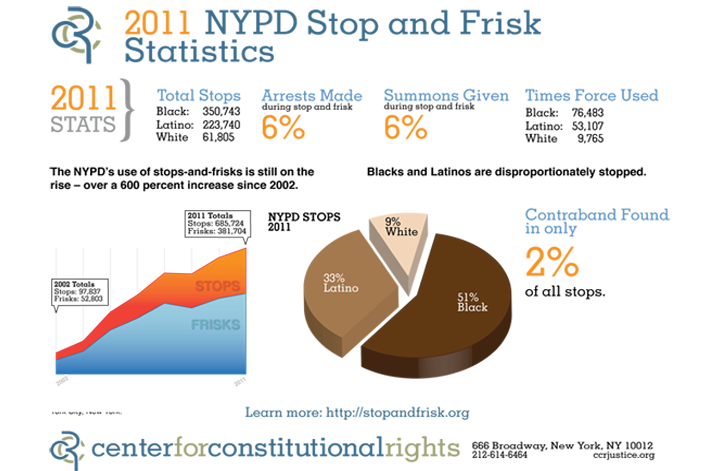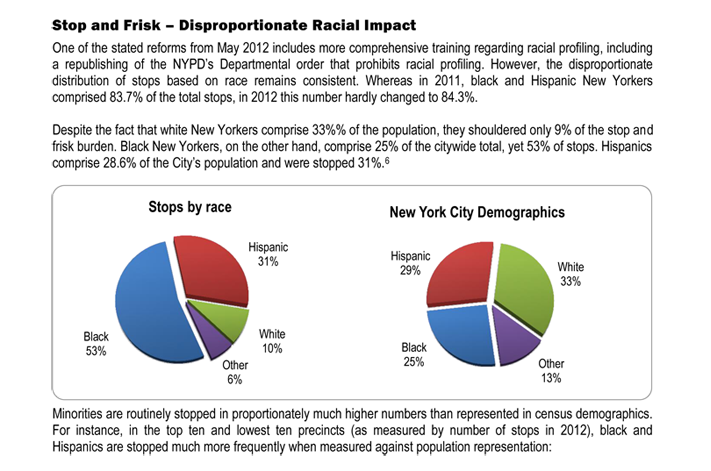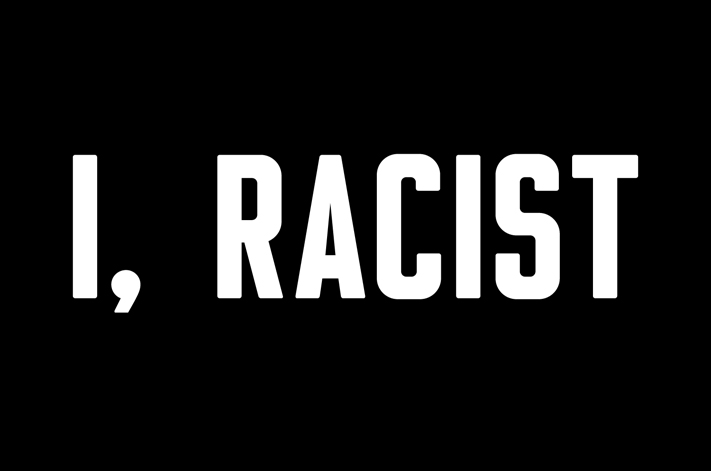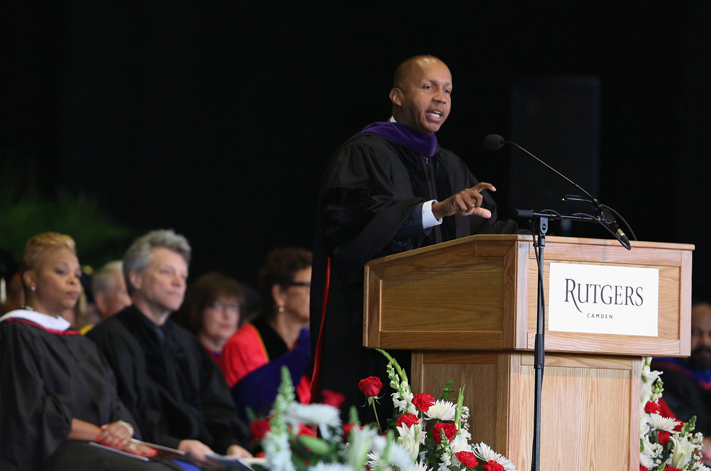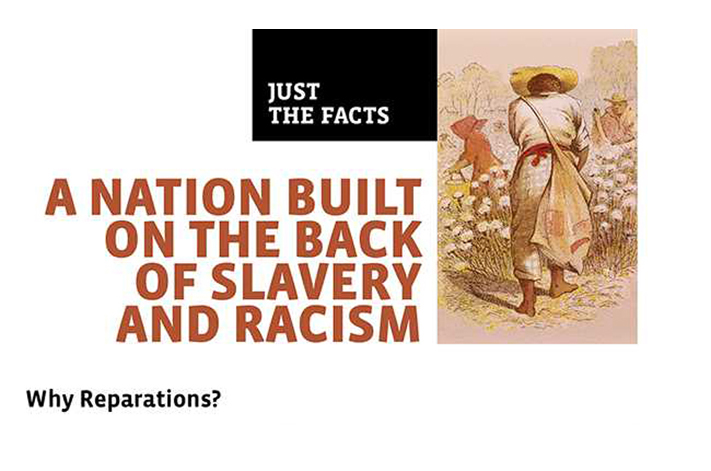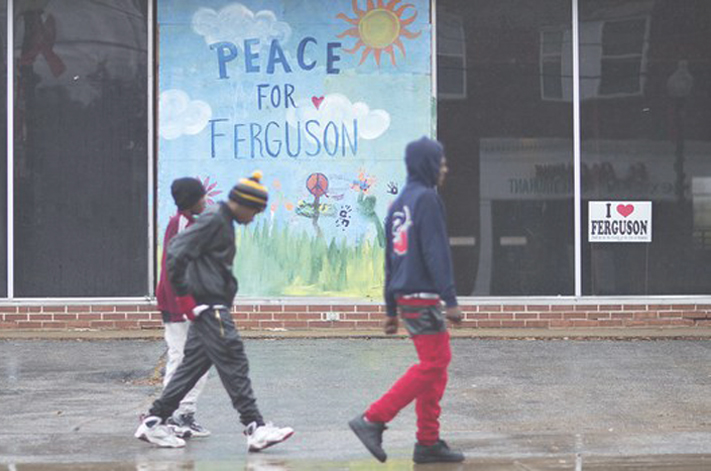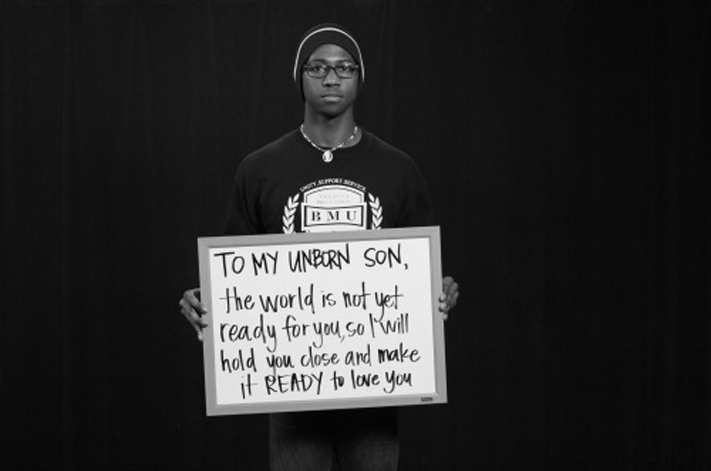Project Description
Stop and Frisk; The Statistics Speak
The Center for Constitutional Rights has long examined the data on Stop and Frisk. The statistics are startling and perhaps worth a review.
The New York Civil Liberties Union also invites a probe into disparate perspective.
The Office of Public Advocate in May 2013 too released pertinent findings in respect to New York City’s population and the prevalence of what “appears”
- The likelihood a stop of an African American New Yorker yielded a weapon was half that of white New Yorkers stopped. The NYPD uncovered a weapon in one out every 49 stops of white New Yorkers. By contrast, it took the Department 71 stops of Latinos and 93 stops of African Americans to find a weapon.
- The likelihood a stop of an African American New Yorker yielded contraband was one-third less than that of white New Yorkers stopped. The NYPD uncovered contraband in one out every 43 stops of white New Yorkers. By contrast, it took the Department 57 stops of Latinos and 61 stops of African Americans to find contraband.
- Despite the overall reduction in stops, the proportion involving black and Latino New Yorkers has remained unchanged. They continue to constitute 84 percent of all stops, despite comprising only 54 percent of the general population. And the innocence rates remain at the same level as 2011 – at nearly 89 percent.
These disparities—in productivity and frequency of stops—demonstrate a pattern of racial profiling in the current stop-and-frisk policy. They make clear the need to aggressively prevent racial profiling.
Courts and the community might wish to consider what the Stop and Frisk policy, and more profoundly, the practice says about we, as a people.
Stop And Frisk Facts
“
FACT: No research has ever proven the effectiveness of New York City’s stop-and-frisk regime, and the small number of arrests, summonses, and guns recovered demonstrates that the practice is ineffective. Crime data also do not support the claim that New York City is safer because of the practice. While violent crimes fell 29 percent in New York City from 2001 to 2010, other large cities experienced larger violent crime declines without relying on stop and frisk abuses: 59 percent in Los Angeles, 56 percent in New Orleans, 49 percent in Dallas, and 37 percent in Baltimore.
Stop-and-Frisk abuses corrode trust between the police and communities, which makes everyone less safe. Don’t believe us? Then listen to NYPD Commissioner Ray Kelly in 2000: “[A] large reservoir of good will was under construction when I left the Police Department in 1994. It was called community policing. But it was quickly abandoned for tough-sounding rhetoric and dubious stop-and-frisk tactics that sowed new seeds of community mistrust.”
Myth #2: Mayor Bloomberg’s stop-and-frisk policies cut the number of murders in half.
“Over the past 10 years, there were 5,430 murders in New York City, compared with 11,058 in the decade before Mayor Bloomberg took office. That’s a remarkable achievement — 5,628 lives saved — attributable to proactive policing strategies that included stops.” – NYPD Spokesperson Paul Browne
FACT: The murder drop happened before Bloomberg took office and before the explosion in stop-and-frisk. The year before the mayor took office there were 649 murders in New York City. In 2011, there were 526 murders. This 19 percent drop is important, but to suggest that murders were cut in half because of stop-and-frisk is simply wrong.
Further, stop-and-frisk has not reduced the number of people who fall victim to shootings. In 2002, there were 1,892 victims of gunfire and 97,296 stops. In 2011, there were still 1,821 victims of gunfire but a record 685,724 stops.
Myth #3: Stop-and-Frisk gets guns off the street and, therefore, prevents murders.<
“There’s no denying that stops take guns off the street and save lives.” –Ray Kelly
FACT: Guns are found in less than 0.2 percent of stops. That is an unbelievably poor yield rate for such an intrusive, wasteful and humiliating police action. Yet, stop-and-frisk has increased more than 600 percent under Bloomberg and Kelly. And the rate of finding guns is worsening as the NYPD stops more innocent people each year.
Myth #4: Stop-and-Frisk is not discriminatory.
“ [B]lacks made up 53 percent of the stop subjects and were 66 percent of the violent crime suspects in 2011… For Hispanics, 34 percent were stop subjects and 26 percent were violent crime suspects.” – NYPD Spokesperson Paul Browne
FACT: Comparing police stops to violent crime suspects is bad math. Only 11 percent of stops in 2011 were based on a description of a violent crime suspect. On the other hand, from 2002 to 2011, black and Latino residents made up close to 90 percent of people stopped, and about 88 percent of stops – more than 3.8 million – were of innocent New Yorkers. Even in neighborhoods that are predominantly white, black and Latino New Yorkers face the disproportionate brunt. For example, in 2011, Black and Latino New Yorkers made up 24 percent of the population in Park Slope, but 79 percent of stops. This, on its face, is discriminatory.
1 All crime data are from the FBI’s Uniform Crime Reports.
2 Data on shooting victims obtained by Murray Weiss of DNAinfo and reported on June 5, 2010.
Click here to download the Myth Busters PDF.
Click here to download a PDF copy of the fact sheet.
